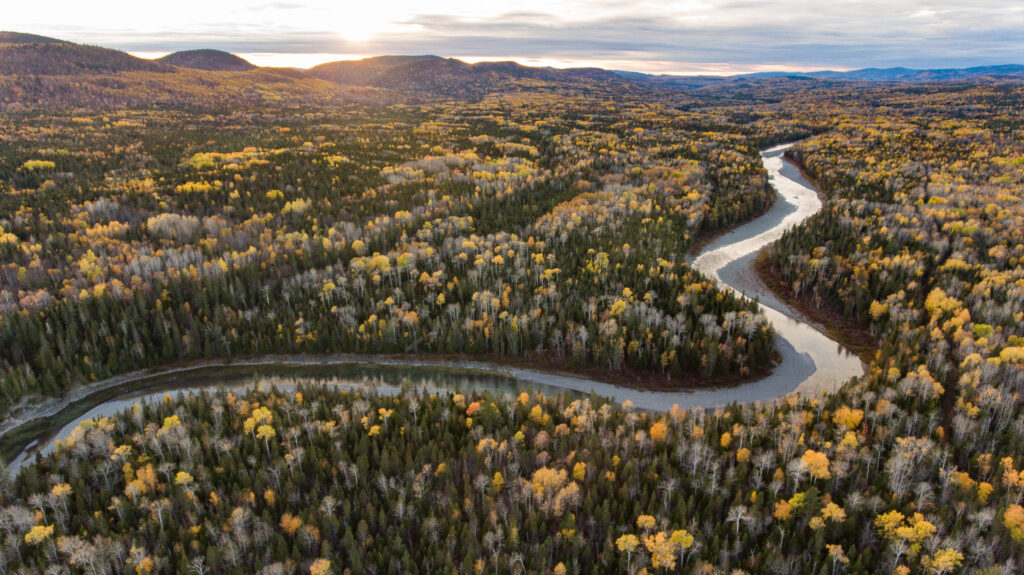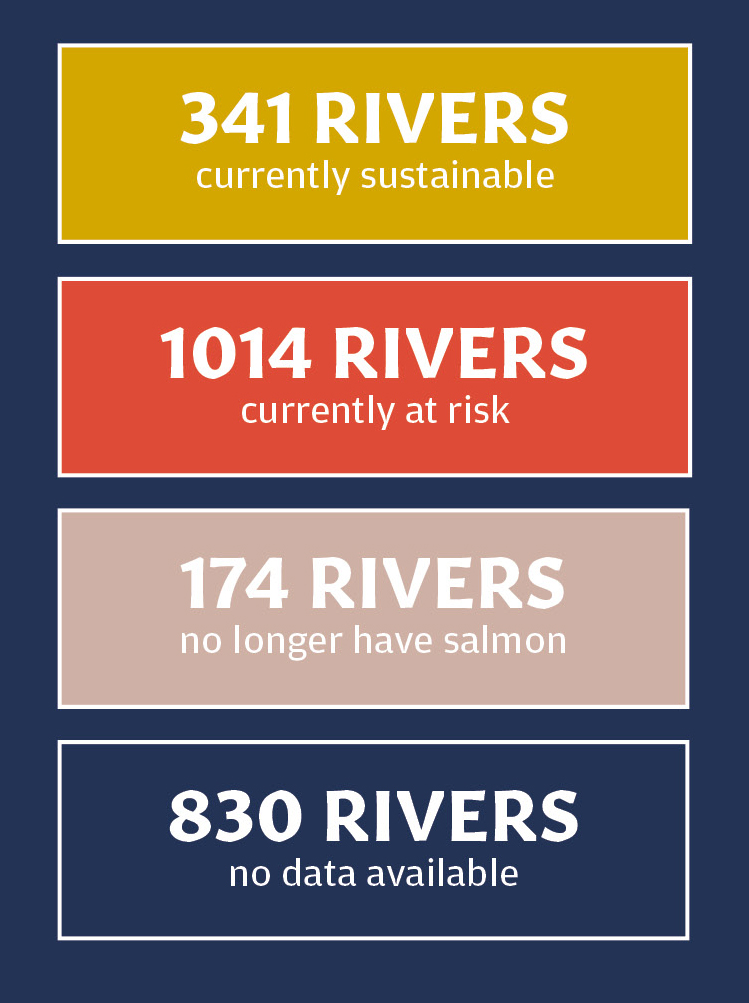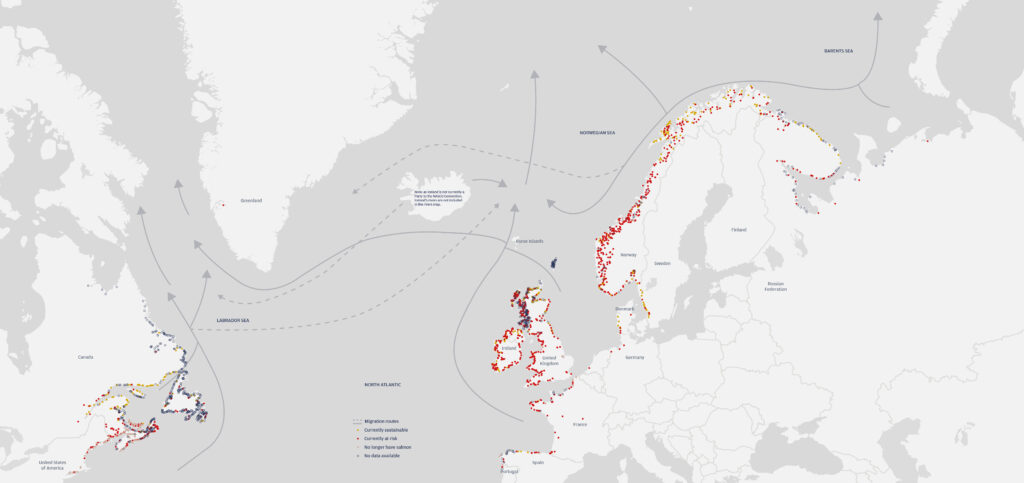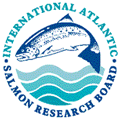Salmon in Rivers
Salmon in Rivers
In the early stages of their life cycle, Atlantic salmon spend between one and seven years in the rivers that they hatch in. When they eventually venture to sea, they travel thousands of kilometres to feeding grounds in the Norwegian or Barents Seas or to the coasts of Greenland and the Labrador Sea. Following one or multiple winters at sea, the salmon return to their rivers of origin to spawn and the life cycle begins again.

NASCO’s contracting Parties have worked to assess the status of the population, or stock, of the salmon in each river around the whole of the North Atlantic to create NASCO’s Rivers Database.
The Status of Salmon Stocks in Rivers

In total, 2,359 rivers have been reported on for 2016. Of these, 174 rivers (or 7%) no longer have their once unique populations of spawning salmon. This is largely due to human activities. A further 1,014 rivers (43%) have stocks that are considered either to be at risk, threatened in some way, or declining in numbers. Only 341 rivers (14%) are considered to have sustainable salmon populations. The remaining 830 rivers have not been assessed, so the status of salmon stocks in these rivers is unknown.
Each circle or dot on the map of the north Atlantic below, represents a river. The colour of the dot shows the status of the population (or stock) of salmon in each river. The arrows on this map indicate the migration routes of Atlantic salmon from rivers of origin to marine feeding areas. Salmon spend at least one winter at sea before making the return journey to spawn. The majority of salmon from the western Atlantic migrate to the Labrador Sea, while most salmon from the rivers of Europe, Iceland, Norway and the Russian Federation migrate to the Norwegian and Barents Seas. The dashed migration lines on the map highlight how a small proportion of Atlantic salmon travel even greater distances across the North Atlantic to feed.

